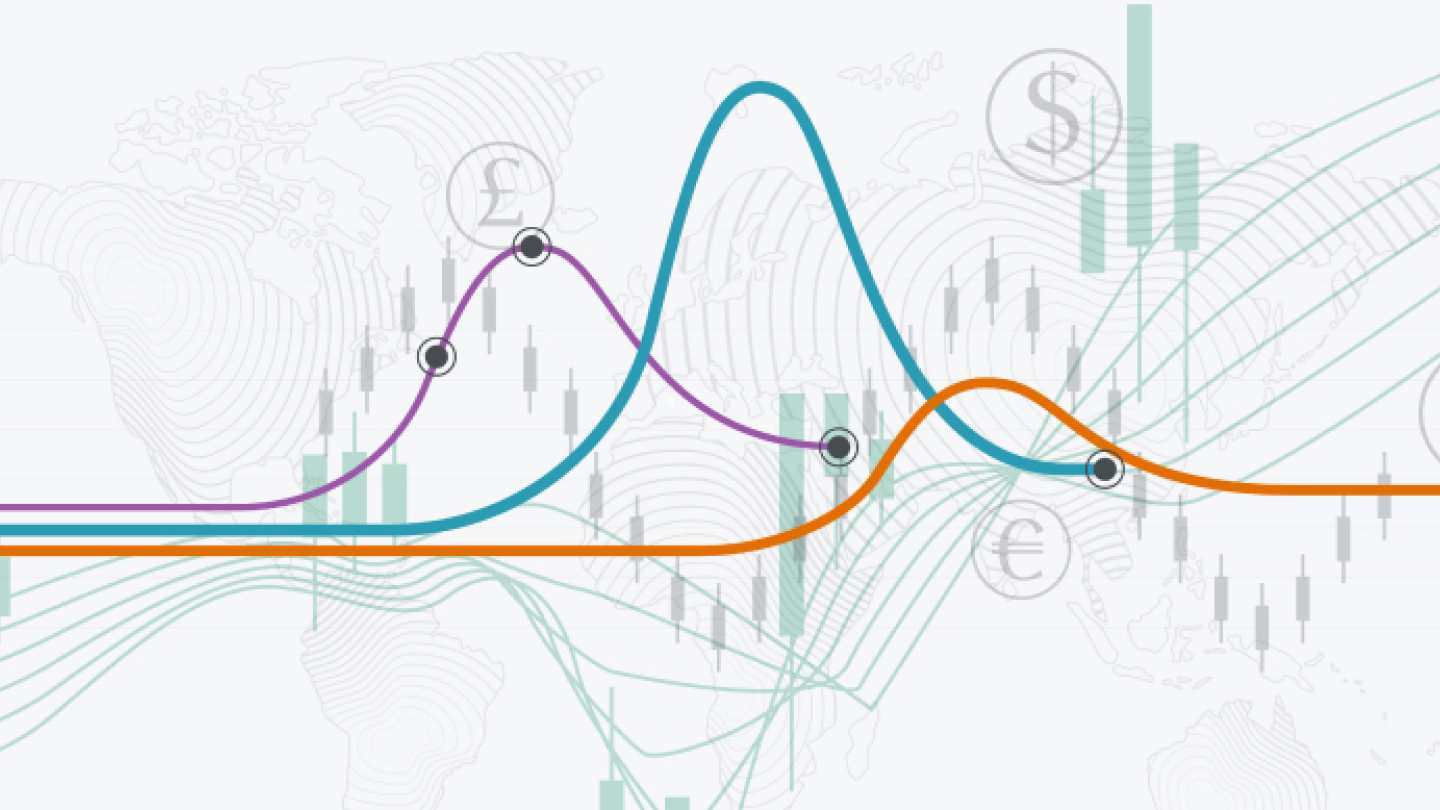
Key takeaways
- The recent rise in stock market concentration has been the steepest in 60 years, with just a few stocks driving most of the returns.
- Today, the top 10 stocks by market cap account for approximately 29.4% of the overall equities market.
- Historically, a steep rise in stock market concentration has always reversed, with the S&P 500 equal-weighted index outperforming the market cap-weighted index.
Today, stock market concentration in the U.S. — defined as the extent to which shares are dominated by a small number of companies — is reaching new extremes. This is largely thanks to a select group of tech stocks known as the Magnificent Seven (Alphabet, Amazon, Apple, Meta Platforms, Microsoft, Nvidia and Tesla), which have been driving the bull market.
Looking ahead, will market concentration rise further? And will the Magnificent Seven continue posting outsized returns, or will they drag the market lower as the hype fades?
What is stock market concentration currently like in the U.S.?
The recent rise in stock market concentration has been the steepest in 60 years, with a few stocks driving most of the returns. This narrow leadership has largely been a result of global central banks pivoting from a zero-interest-rate policy (ZIRP) to a “higher-for-longer” regime to counter stubbornly high inflation.
“Sharply higher rates and a slower growth outlook have resulted in an outflow from long-duration and cyclical assets. Mega-cap companies have been beneficiaries of this market rotation, as they offer attractive liquidity, sustainable growth and much stronger pricing power,” said Dubravko Lakos-Bujas, Chief Global Equity Strategist at J.P. Morgan.
In particular, there is extreme divergence in index weight concentration in mega caps versus the next tranche of large caps. Today, the top 10 stocks by market cap in the U.S. account for approximately 29.4% of the overall equities market, according to Khuram Chaudhry, Head of European Quantitative Strategy at J.P. Morgan.
“Sharply higher rates and a slower growth outlook have resulted in an outflow from long-duration and cyclical assets. Mega-cap companies have been beneficiaries of this market rotation, as they offer attractive liquidity, sustainable growth and much stronger pricing power.”

Dubravko Lakos-Bujas
Chief Global Equity Strategist, J.P. Morgan
What about S&P 500 concentration?
Looking specifically at the S&P 500, mega-cap crowding — measured by the market cap share of the largest 10 stocks relative to the broader market — is at the 86th percentile relative to history.
“In 2023, S&P 500 performance was led by a small number of mega-cap stocks, with the Magnificent Seven delivering 101% returns versus the equal-weight index, which yielded 2.5%,” Lakos-Bujas said. This has largely been driven by the growing interest surrounding generative AI, with major companies in the space enjoying lofty valuations given their outlook for stronger growth at a time of elevated macro uncertainty.
“The large capital investments required to build out AI and LLM infrastructure favor the largest multinationals. These companies should continue to win market share from smaller players due to massive economies of scale and their global footprint. For this reason, the investor excitement in the space has been persistent and relatively narrow,” Lakos-Bujas added.
S&P 500 market concentration is at multi-decade highs
What are the investment implications of high stock market concentration?
In general, the largest stocks by market cap tend to perform better than their peers. “Comparing the forward earnings-per-share (EPS) growth forecasts for the top 10 U.S. stocks to the broader market shows there is a superior growth story,” Chaudhry noted.
However, while the top 10 stocks have exhibited higher growth rates than the remaining stocks in the index, the disparity is not as wide as the levels observed during the 1990s dotcom era. “Also, the relative EPS growth prospects of these stocks already appear to have peaked, suggesting a degree of cyclicality or that growth is becoming less superior to the broader market. If this is indeed the case, then market concentration may fail to deliver continued outperformance in 2024,” Chaudhry added.
In addition, while these stocks offer strong momentum, they may not be as favorable in the event of soft landing. “As is typical for crisis periods, if the economy slips into a recession, market concentration should remain narrow and we would expect a rotation from cyclicals to defensives. Only in a soft landing scenario would we expect leadership to broaden into smaller, lower-quality and cheaper companies,” Lakos-Bujas said.
Will high stock market concentration continue in 2024?
“In the past, a steep rise in concentration and narrow leadership has always reversed, with the S&P 500 equal-weighted index outperforming the market cap-weighted index. The peak in this concentration episode is likely to coincide with the inflection in the business cycle, recession and greater anti-trust regulations,” Lakos-Bujas noted.
Liquidity could also play a key role. According to Chaudhry, stock market concentration has a high probability of rising when money supply growth is falling, and vice versa. “Today, there is a sharp fall in money supply growth across regions. Until U.S. liquidity starts to grow again, market concentration may well increase further,” Chaudhry said. “But if money supply growth rises as the Fed cuts rates and the U.S. dollar declines, a reversal in market concentration could be a key risk in 2024.”
Stock market concentration and liquidity have an inverse relationship
Related insights
-

Global Research
Market outlook for 2024: Slow global growth clouds forecast for equities
December 13, 2023
What does the challenging macro backdrop of sluggish growth and stubborn inflation mean for markets? Explore the outlook for equities, commodities, currencies, emerging markets and more.
-

Global Research
Will gold prices hit another all-time high in 2024?
January 17, 2024
Gold prices soared to an all-time high of $2,135.39/oz at the end of 2023. With expected interest rate cuts and cooling inflation on the horizon, what is the gold price forecast for 2024 and beyond?
-

Global Research
Global Research
Leveraging cutting-edge technology and innovative tools to bring clients industry-leading analysis and investment advice.
This communication is provided for information purposes only. Please read J.P. Morgan research reports related to its contents for more information, including important disclosures. JPMorgan Chase & Co. or its affiliates and/or subsidiaries (collectively, J.P. Morgan) normally make a market and trade as principal in securities, other financial products and other asset classes that may be discussed in this communication.
This communication has been prepared based upon information, including market prices, data and other information, from sources believed to be reliable, but J.P. Morgan does not warrant its completeness or accuracy except with respect to any disclosures relative to J.P. Morgan and/or its affiliates and an analyst's involvement with any company (or security, other financial product or other asset class) that may be the subject of this communication. Any opinions and estimates constitute our judgment as of the date of this material and are subject to change without notice. Past performance is not indicative of future results. This communication is not intended as an offer or solicitation for the purchase or sale of any financial instrument. J.P. Morgan Research does not provide individually tailored investment advice. Any opinions and recommendations herein do not take into account individual client circumstances, objectives, or needs and are not intended as recommendations of particular securities, financial instruments or strategies to particular clients. You must make your own independent decisions regarding any securities, financial instruments or strategies mentioned or related to the information herein. Periodic updates may be provided on companies, issuers or industries based on specific developments or announcements, market conditions or any other publicly available information. However, J.P. Morgan may be restricted from updating information contained in this communication for regulatory or other reasons. Clients should contact analysts and execute transactions through a J.P. Morgan subsidiary or affiliate in their home jurisdiction unless governing law permits otherwise.
This communication may not be redistributed or retransmitted, in whole or in part, or in any form or manner, without the express written consent of J.P. Morgan. Any unauthorized use or disclosure is prohibited. Receipt and review of this information constitutes your agreement not to redistribute or retransmit the contents and information contained in this communication without first obtaining express permission from an authorized officer of J.P. Morgan. Copyright 2024 JPMorgan Chase & Co. All rights reserved.